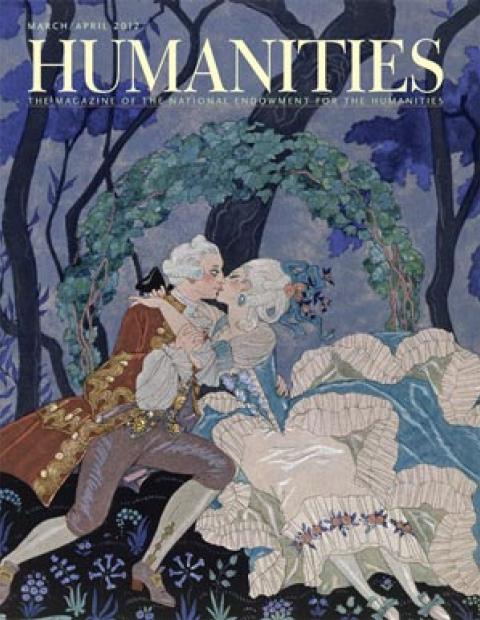Read someone’s mail? No, you would never do that, would you? But IQ would. For this edition, we’re talking with Sandra Spanier, professor of English and general editor of the Hemingway Letters Project at Pennsylvania State University. Spanier and co editor Robert Trogdon recently published The Letters of Ernest Hemingway, 1907–1922 (Cambridge University Press, 2011) with support from NEH’s Scholarly Editions program.
What drew you to Hemingway as a scholar?
It definitely was not the stereotypical chest-thumping macho image that too often overshadows Hemingway, the artist, in people’s minds. I was fortunate to first encounter his writing without much awareness of his celebrity persona, and I found the work intriguing and beautiful in ways I am still hard-pressed to explain.
What is your favorite Hemingway novel or short story?
A Farewell to Arms. I’ve probably read it at least a hundred times, but it never fails to move me, and I never cease finding something new in it. It’s a gripping war novel that makes a profound antiwar statement, and it’s also an incredibly romantic love story. And the style is brilliant. Much of the narration is classic Hemingway understatement, but in dialog his characters make allusions to Julius Caesar and Marvell’s “To His Coy Mistress,” and in a stream-of-consciousness passage that rivals any Faulkner wrote, he weaves in the lyrics of a sixteenth-century love poem.
How many of Hemingway’s letters survive?
We have located some six thousand so far. Where did you find the letters that make up the book? Everywhere. We have gathered letters from 250 different sources, including family members and people who corresponded with Hemingway themselves. The John F. Kennedy Presidential Library has the world’s largest archive of Hemingway’s papers, and they have generously donated copies of their entire holding of outgoing letters to the project.
Favorite discovery while working on the project?
One of my favorites is a letter Hemingway wrote to his mother in February 1922, soon after he arrived in Paris, in which he describes his new friends Ezra Pound and Gertrude Stein (“very large and nice”). He writes, “Paris is so very beautiful that it satisfies something in you that is always hungry in America.”
The letter you wish you could have included, but couldn’t?
If only Hemingway’s first great love, Agnes von Kurowsky, hadn’t become engaged to a jealous Italian aristocrat who made her burn her old boyfriend’s letters! And then the fiancé dropped her. She was the Red Cross nurse who tended to Hemingway at the hospital in Milan after his wounding in 1918—the prototype of Catherine Barkley in A Farewell to Arms. In Agnes’s surviving letters to Hemingway—which he kept his entire life—she says things like, “You shouldn’t write so often,” and “I got a whole bushel of letters from you today.”
What did you learn about young Hemingway from his letters that you didn’t know before?
He supposedly hated his mother, and it’s true that later in his life they had a contentious relationship. But the early letters show that they were quite close in many ways—they shared an interest in painting and opera, he joked with her, and confided his feelings. He also wrote letters to his parents and siblings individually, sometimes on the same day, mailing them in separate envelopes to the same address in Oak Park, Illinois.
How would you describe Hemingway as a correspondent?
Unguarded, funny, crude, eloquent, sensitive, garrulous (not a quality you would expect from his tight, polished published prose. He said himself that his letters were “often libelous, always indiscreet, often obscene and many of them could make great trouble.” Did Hemingway print or type most of his letters? And how bad (or good) is his handwriting? There are roughly an equal number of handwritten and typewritten letters. His handwriting is quite open and legible, with some quirks, like not connecting his y’s in mid-word, so that we have to ponder over such questions as to whether he meant to write “anyway” or “any way .”But his typewritten letters are often even trickier to transcribe. Instead of using an eraser, he would type corrections over other words so that his intention is hard to decipher, and sometimes the keys would jam. His typewritten letters are full of running commentary on the rotten state of his “mill” or “typer.” During the period the volume covers, Hemingway courts and marries his first wife, Hadley Richardson. Did he woo her with words? I’m sure he did, but unfortunately (if understandably), Hadley destroyed most of them after he left her to marry their mutual friend, Pauline Pfeiffer. In one surviving letter from Ernest to Hadley, dated December 23, 1920, he wrote, “You can make me jealous—and you can hurt most awfully—’cause my loving you is a chink in the armour of telling the world to go to hell and you can thrust a sword into it at any time—” That’s a pretty eloquent declaration.
Hemingway never wanted his letters to be published. How do you think he’d react to a project like this?
He did not have much regard for critics or academics, and I doubt it would please him much to have the world reading his mail. His surviving son, Patrick Hemingway (now eighty-three years old), wished to see a complete scholarly edition of his father’s letters, and he has been wonderfully supportive of this project. He has said, “If you don't want them published, burn them."


